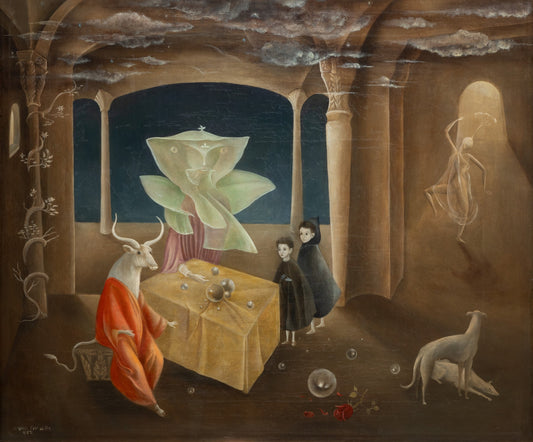If you ever find yourself in Denver, Colorado, you’ll encounter two of its most iconic sculptures, I See What You Mean, a blue bear, and Blucifer, a blue Mustang, created as a love letter to the state of Colorado. Both sculptures are of animals that inhabit Colorado, and both use the color blue for different artistic reasons. Interestingly, you will not find sculptures in an art museum or a sculpture park. Rather, they’re public art located in two iconic spots of Denver—downtown in front of the Convention Center and outside the international airport. Since 2018, I have been to Denver twice and both times I encountered Blucifer and I See What You Mean. I personally wasn’t aware of the sculptures until my friend, who lives in Colorado, informed me about them.
Al Lewis, a columnist for Dow Jones Newswires, said the blue bear, I See What You Mean, is “one of the greatest pieces of art in all of Denver.” The bear is seen leaning his nose and paws up against the window peeking inside the Colorado Convention Center in downtown Denver. It stands 40 feet tall, weighs 10,000 pounds, and is a Lapis lazuli color. The sculptor of this large majestic sculpture is Lawrence Argent, a visual artist and college art professor at the University of Denver. He was tasked with creating a piece of art representing Denver, Colorado. He desired to make an original piece of art that wasn’t stereotypical. In an interview, Argent said, “There’s an iconic Colorado imagery—the Rockies, the Flatirons, and all that—that I think is a little bit overused, a little passe.” He became inspired to create the bear after hearing the news of a bear peeking into someone’s home in Colorado. Argent focused on representing how people encounter wildlife.

Argent and his team installed the sculpture in the summer of 2005. Despite Denver being the bear’s final resting area, the bear was first developed in California. Through a 3D printer, the bear was constructed from several different pieces. Jessica Hughes, a writer for Uncover Colorado, acknowledged how the bear was built in separate sections, “the left and the right legs, the belly, the right, and the left arm, shoulders, and head.” Afterward, all the sections were transported to Denver where the bear was put together. Surprisingly, the iconic blue color of the bear was a total accident. Argent claimed, “Originally the bear was going to reflect the colors of Colorado, with sandstone colors and things like that. But a printout of the design came back blue by mistake, and I thought that was much more exciting.” The finishing touches of the bear consisted of “a topcoat of pigmented polymer concrete.”Argent, like everyone else, got to enjoy his sculpture until his passing on October 4, 2017, at only 60 years old.

The blue Mustang, Blucifer, is a 32-foot-tall sculpture weighing 9,000 pounds and stands outside the Denver International Airport rearing up on its two hind legs. The sculptor is Luis Jimenez, an American sculptor and graphic artist of Mexican descent. The idea of a Mustang came from his own horse, Black Jack, and he began working on the sculpture in 1993. Regarding the vibrant blue color of the Mustang, Jimenez had a “love for traditional Mexican muralists and the bright colors he would have encountered as a boy growing up and working in his father’s sign shop in El Paso, Texas.” One of Jimenez’s biggest muralist ideals for bright colors was Diego Rivera, Frida Kahlo’s husband. Jimenez also paid tribute to his father’s neon sign shop through the Mustang’s bright red eyes, which are LED flood lights. As an artist, Jimenez was known for his use of “exaggerated stylization” in his artwork. He also wanted to acknowledge the Southwest and his heritage, and this can be seen in the stance of the Mustang. Cameron Bailey, a writer for Uncover Colorado, wrote, “The rearing of the horse is used to symbolize the freedom that the Southwest has to offer all who come to visit.”

Nevertheless, the Mustang is known for being cursed, creepy, and deadly. First off, the name “Blucifer” has an eerie meaning. The “B” stands for blue and the name Lucifer is the name of a fallen angel in the Catholic bible. Secondly, the Mustang is also referred to as “The Demon Horse.” Although it wasn’t Jimenez’s initial intention to create an intimidating sculpture, his work of art proved to be destructive and hazardous. On June 13, 2006, when it wasn’t even complete, Jimenez was killed. While working in his studio in Hondo, New Mexico, a loose portion of the sculpture had fallen on him “severing an artery in his leg.” Jimenez, who was only 65 years old at the time, bled to death. His relatives were left to finish the sculpture, which was completed two years later and showcased in Denver on February 11, 2008.
It’s been 15 years since the blue bear and Mustang made their first appearance. They’re two pieces of public art you cannot miss when you visit Denver, serving as reminders of being out west. I felt that way after seeing the blue bear and Mustang for the first time. Argent and Jimenez did the state of Colorado justice through their sculptures of animals out west. Although Argent and Jimenez have both passed away, their public art lives on in Denver for locals and visitors alike to enjoy.
©ArtRKL™️ LLC 2021-2023. All rights reserved. This material may not be published, broadcast, rewritten or redistributed. ArtRKL™️ and its underscore design indicate trademarks of ArtRKL™️ LLC and its subsidiaries.





